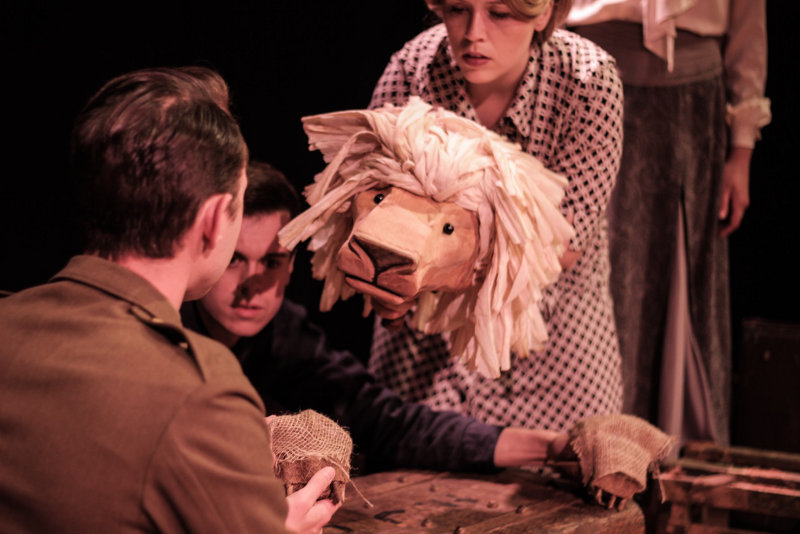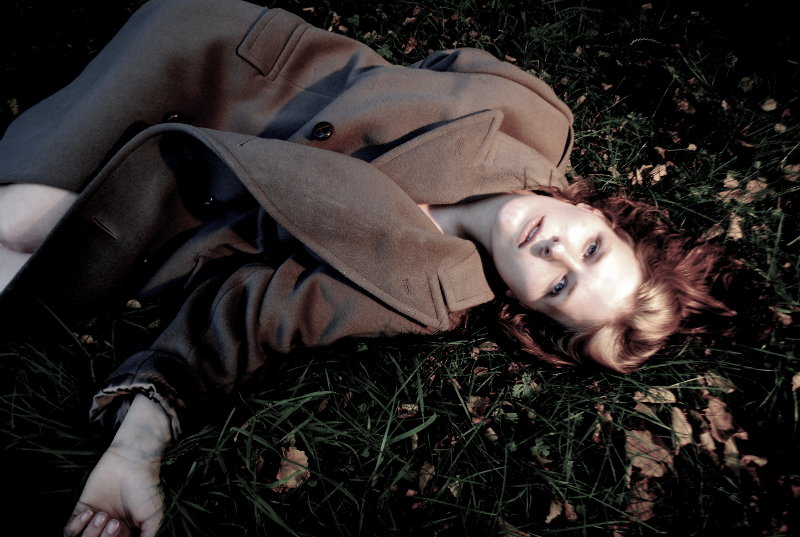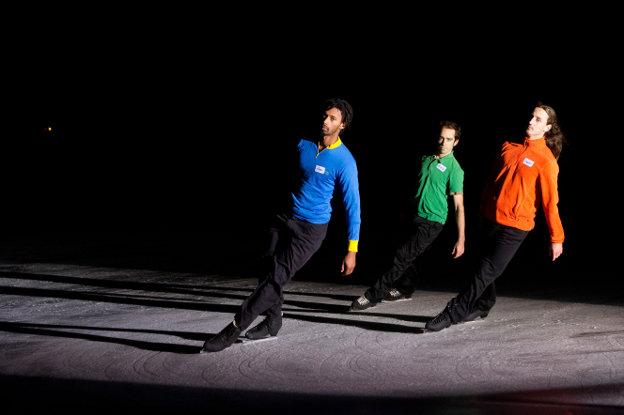Projector/Conjector states in the programme that it is a dance piece as well as a piece of theatre. This production pushes the definition of both those terms. The two performers, Mamoru Iriguchi and Selina Papoutseli move slowly about the small stage; Iriguchi has a TV screen on his head, Papoutseli has a projector on hers. They then present very clever sequences as these two multimedia characters meet and interact.
How you experience this piece will depend largely on your taste for the experimental. There are some quite remarkable moments as the two play with the bulky machines they have strapped to their heads, some lovely moments of surprise, and some superbly executed moments of comedy. The whole thing has an air of the ridiculous, aided by the white onesies they are wearing which have male and female genitals drawn on them. The audience roared with laughter throughout the show, the deadpan nature of the delivery chiming with the overall absurdity of the piece.
The story begins simply and quickly nosedives into the surreal as Conjector becomes obsessed with executing a pirouette, and it becomes apparent that the two are exploring a theatrical explosion of Swan Lake.
Theatregoers who have little patience for experimental work may find it testing. The piece would perhaps struggle with a more mainstream audience, and arguably is preaching to the converted nestled as it is within the culturally ‘well-versed’ crowd of Summerhall. But it is impossible to deny its originality and the skill with which it is executed.
Iriguchi is exploring questions of how we define dance and theatre and is doing it in an entertaining and remarkably sophisticated way, despite the ludicrous nature of the piece. But its humour is also its strongest argument: it is poking fun at the prestigious form of dance theatre. The experiment is certainly interesting, even though I came away slightly unsure of the results. My predominant reaction was one of bemused amusement, but it is quite unlike anything I’ve seen before.






